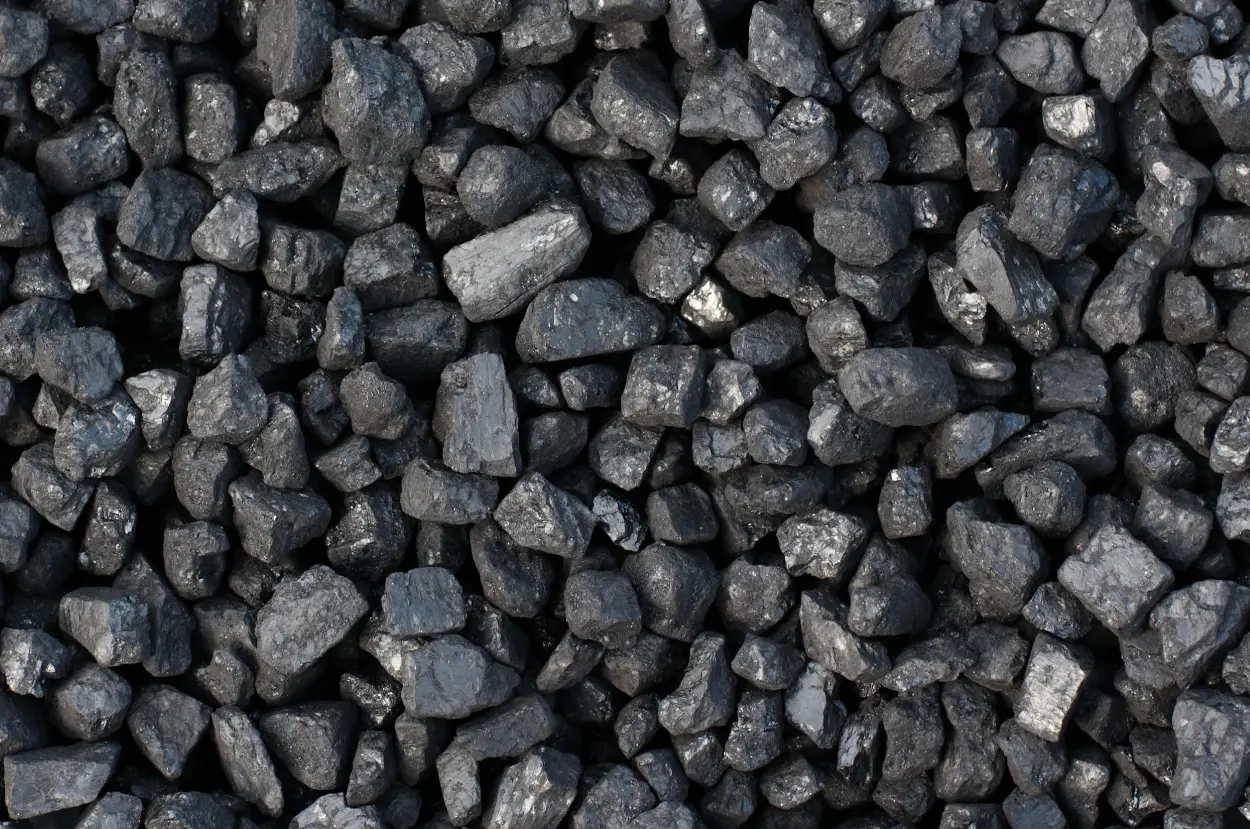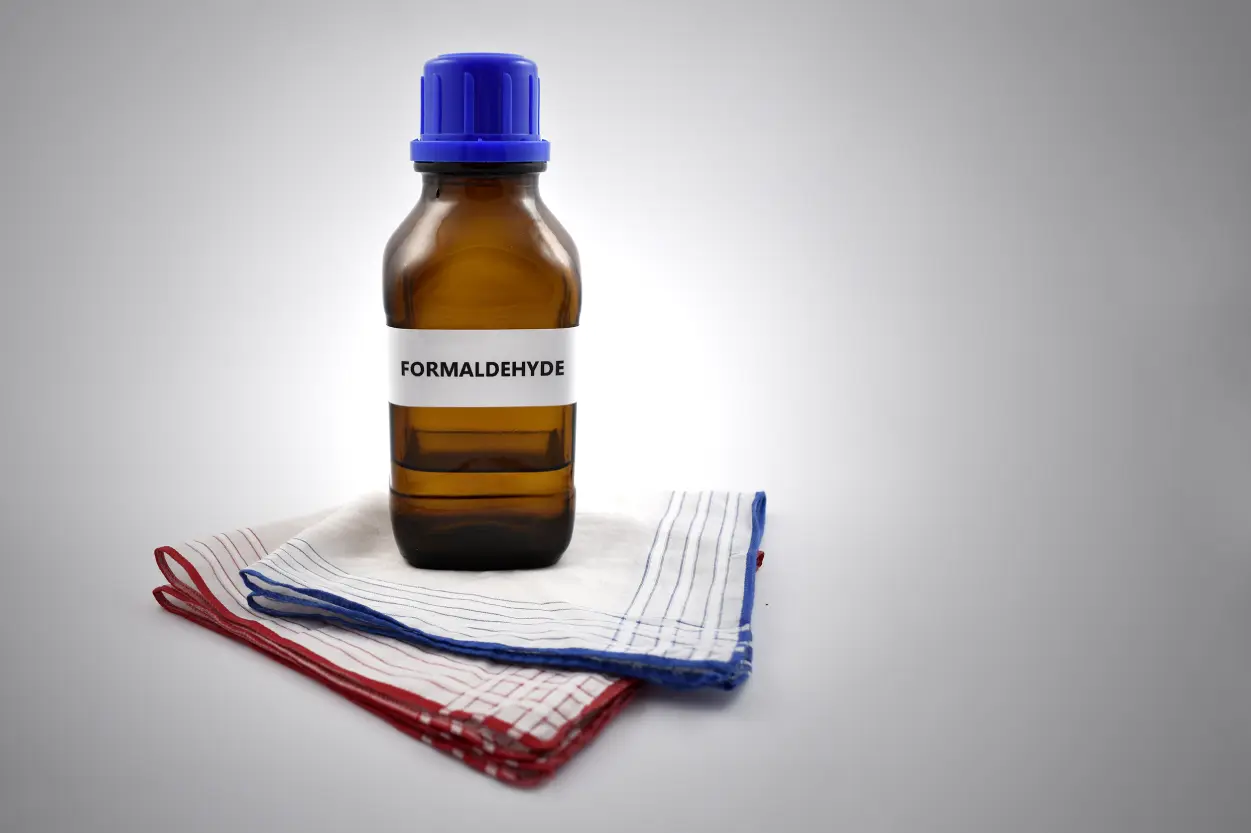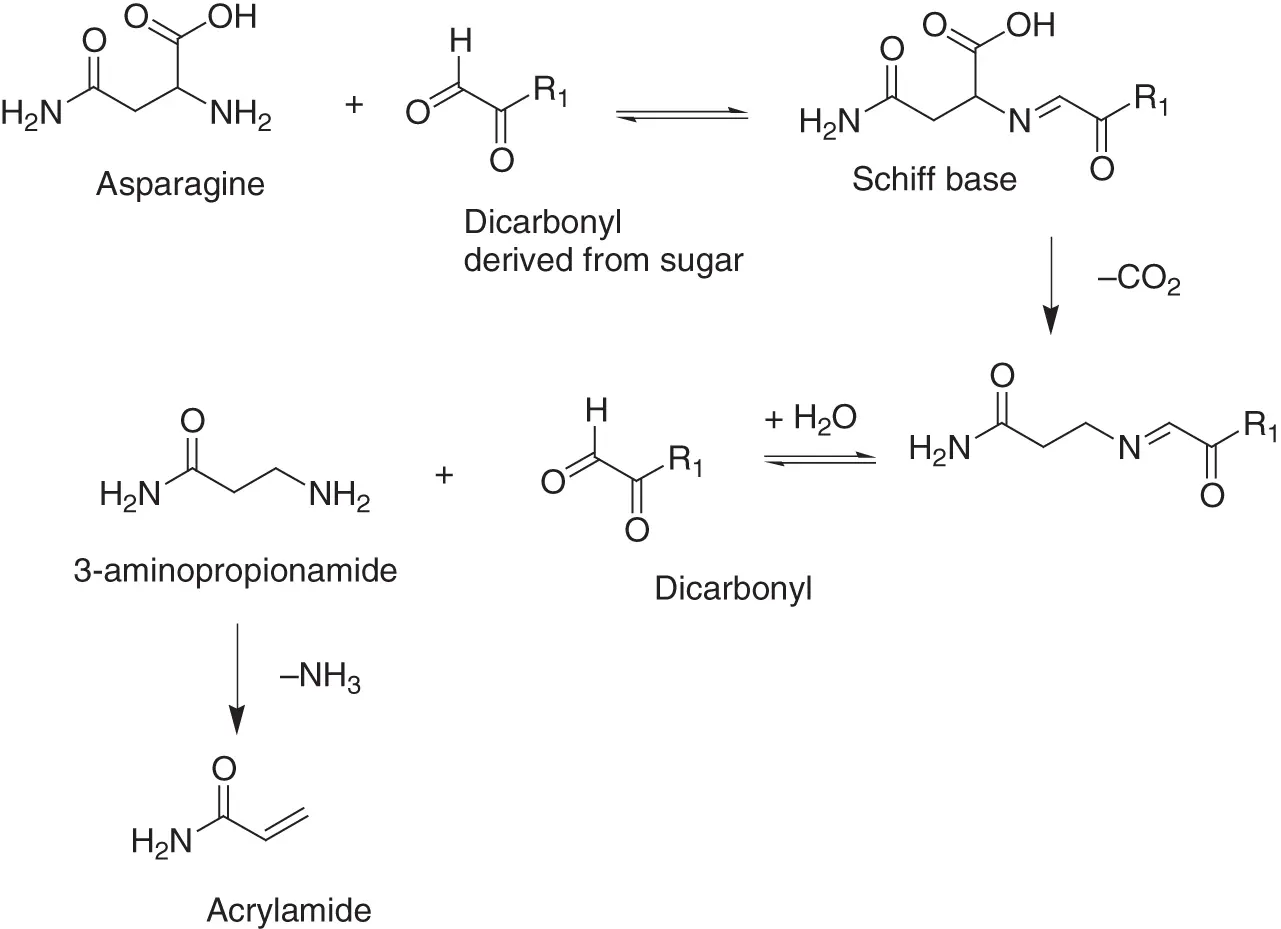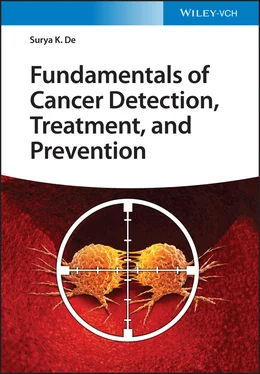2.13 Known Human Carcinogens
2.13.1 Arsenic, Coal Tar, Coal‐tar Pitch, Diesel, Asbestos, Formaldehyde, and Air Pollutants
Arsenic is a widely distributed, natural element found in the Earth's crust. In its inorganic form, it is toxic to the human body and a known carcinogen [82]. It reaches people through contaminated drinking water in less‐developed countries such as Bangladesh, and it can find its way into food produced from crops irrigated with arsenic‐contaminated water ( Figure 2.12).

Figure 2.12 Arsenic causes cancer.
Source: darkoudovicic/Adobe Stock
.
The WHO estimates that at least 140 million people in 50 countries drink water containing high levels of arsenic. In addition, arsenic is one of the cancer‐causing agents in tobacco.
Coal tar and coal‐tar pitch are coal derivatives widely used for various commercial and industrial purposes. Research findings suggest that miners who are exposed to the process of coal gasification and other occupational workers involved ( Figure 2.13) with coal tar or coal‐tar pitch suffer significantly higher rates of skin cancer and cancers of the lungs, bladder, kidney, and digestive tract [83,84].

Figure 2.13 Coal exposure can cause cancer.
Source: Anzelm/Adobe Stock
.
Diesel exhaust from the burning of diesel oil has over 30 components ( Figure 2.14) that can cause various types of cancer, according to the International Agency for Research on Cancer [85–95].

Figure 2.14 Exposure of diesel exhaust can cause cancer.
Source: Alexandr Mitiuc/Adobe Stock
.
Fracking is the process of drilling down into the lower layers of the earth and injecting liquid at high pressure, in order to force open existing fissures and extract oil or gas ( Figure 2.15). During this technique, however, cancer‐causing compounds including benzene and formaldehyde may be released into the air and groundwater [96].

Figure 2.15 Exposure to fracking can cause cancer.
Asbestos is a naturally occurring mineral substance that has a fibrous structure. For this reason, it can be pulled into a fluffy consistency. Asbestos was used as an insulation material ( Figure 2.16) for years before the dust was linked to lung cancer [98]. It is also linked to mesothelioma, another serious and potentially fatal disease (see later chapter on Mesothelioma).

Figure 2.16 Exposure to asbestos causes lung cancer.
Source: Profotokris/Adobe Stock
.
Products that contain asbestos are not completely banned in the United States, though the Environmental Protection Agency (EPA) regulates their use.
Formaldehyde is a chemical compound used as a constituent of certain building materials and some types of glue, as well as a preserving agent and disinfectant ( Figure 2.17). Scientists have known for years that formaldehyde can cause nasal cancer in rats, and the International Agency for Research on Cancer reports that it is a carcinogen for humans also [99–104].

Figure 2.17 Formaldehyde can cause cancer.
Source: betka82/Adobe Stock
.
Air pollution is defined as the presence of poisonous chemicals or compounds (organic or inorganic) in the air we breathe, at levels that pose a health risk. Air contaminated with pollution, which can exist as particulates, biological molecules, or gases, can lead to various types of cancer [105,106]. One example is soot, which is contaminated carbon particles resulting from incomplete burning of organic material. Even as long ago as the 1770s, chimney sweeps in London were developing scrotal cancer at higher rates than in the general population. Inhalation of soot has also been linked to lung, esophageal, and bladder cancers.
2.13.2 Certain Types of Plastic
These can be dangerous in terms of exposing humans to carcinogenic substances, especially when plastic containers become scratched or cracked, allowing chemicals to be leached out. One example is bisphenol A ( BPA ), a synthetic estrogen that has been used in many plastics and resins since the 1960s. BPA resins can be used inside products like metal food cans as sealants, while polycarbonate BPA plastics can include water bottles and food storage containers. BPA can even be found in thermal paper receipts, where it is used to stabilize the ink.
The safety of BPA has been controversial, as studies have found it is linked to obesity, diabetes, problems with fertility and reproductive organs, susceptibility to various cancers, and cognitive/behavioral deficits like attention deficit hyperactivity disorder (ADHD).
While many plastic manufacturers have started labeling their products “BPA‐free,” the compound is still very commonly used in a broad array of consumer products.
It is a chemical mainly used to make substances called polyacrylamide and acrylamide copolymers, which are used in several types of industrial processes, including the production of paper, dyes, and plastic. They are also found in some consumer items like caulking and food packaging.
In addition, acrylamide is found in some foods. The main foods containing acrylamide are French fries and potato chips, crackers, bread, cookies, breakfast cereals, canned black olives, prune juice, and coffee. It can be created when vegetables that contain the amino acid asparagine are heated to high temperatures in the presence of certain sugars. The browning of meat generates acrylamide as a byproduct of the chemical reaction called the Maillard reaction, which occurs during the browning process ( Figure 2.18) between asparagine and reducing sugar [123–126]. The carbonyl group of the sugar reacts with the amino group of the amino acid to form an N ‐substituted glycosylamine, which undergoes Amadori rearrangement to produce a ketosamine. The open‐chain ketosamine further undergoes dehydration and deamination steps to give a reactive dicarbonyl compound. This dicarbonyl reacts with an asparagine to produce a Schiff base, which further degrades through Maillard reaction to produce toxic acrylamide ( Scheme Scheme 2.1). Acrylamide can react with cysteine or lysine and damage normal DNA.

Figure 2.18 Browning of meat produces acrylamide and it can cause cancer.

Scheme 2.1 Formation of acrylamide, a byproduct of Maillard reaction between reducing sugars and amino acids.
Читать дальше




















